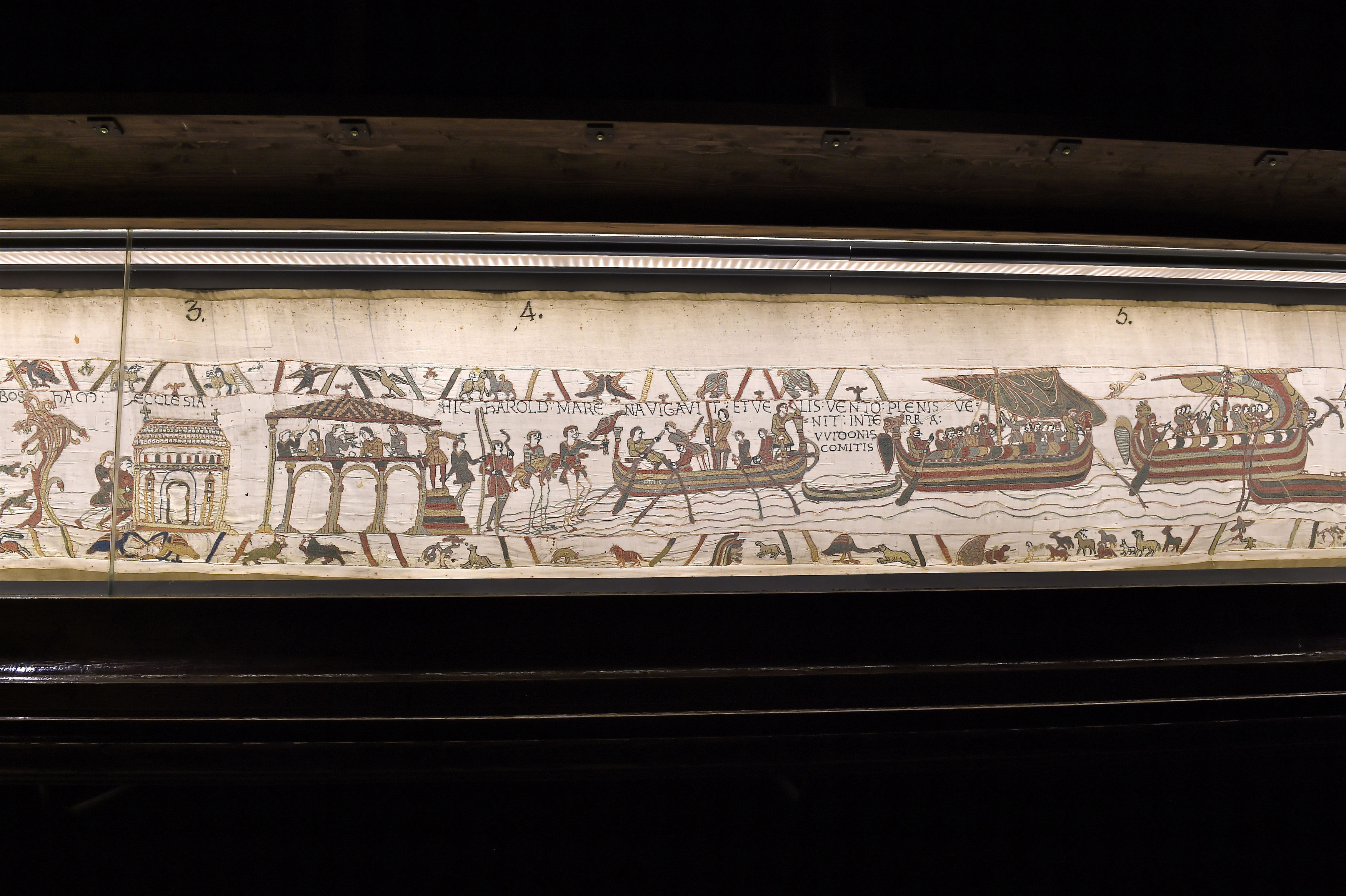
The British Museum would be “honoured and delighted” to display the Bayeux Tapestry if it comes to the UK, its director has said.
Following the news that France may lend the famous work to Britain, Hartwig Fischer said: “This would be a major loan, probably the most significant ever from France to the UK.
“It is a gesture of extraordinary generosity and proof of the deep ties that link our countries.
“The Bayeux Tapestry is of huge importance, as it recounts a crucial moment in British and French history, 1066.”
It is understood that Theresa May will discuss loaning the tapestry to the UK when she meets with French President Emmanuel Macron on Thursday.
The location for the display in Britain is not thought to have been decided and it could take five years before it reaches British shores.
 (PA Graphics)
(PA Graphics)
A spokesman for Mr Macron has said it will definitely not be in the UK before 2020.
Mr Fischer said: “We would be honoured and delighted to display it at the British Museum, the UK’s most visited and internationally respected institution.
“Here it would be seen by the widest UK and international audience in the context of a museum of world cultures.”
Although called a tapestry, the work is in fact a 70 metre-long embroidery stitched in nine different panels.
It is currently on display in a darkened room in the Bayeux Museum in Normandy.
The tapestry will not travel before 2020 because of the need for restoration work to ensure it is not damaged in transit, an official in Mr Macron’s office told reporters in France.
“This loan is under consideration, because there will be several months of restoration work at the Museum of Bayeux,” said the official.
“It will not be before 2020 because it is an extremely fragile cultural treasure which will be subject to major restoration work before being transported anywhere.”
Downing Street declined to comment on reports that a deal had been reached to bring the tapestry to Britain.
 A section from the Bayeux tapestry (Stephane Maurice/Mairie de Bayeux via AP)
A section from the Bayeux tapestry (Stephane Maurice/Mairie de Bayeux via AP)
Napoleon put the Bayeux Tapestry on display in Paris in 1804 and it was briefly exhibited at the city’s Louvre in 1944.
Although the first record of the tapestry is in the Bayeux Cathedral inventory of treasures in 1476, it is believed it was stitched in England by nuns of St Augustine’s Abbey.
Dr Levi Roach, medieval historian at the University of Exeter, said: “As Britain seeks to renegotiate its relationship with France, there could scarcely be a better symbol of the close yet fraught ties that have bound the two nations together.
“Probably made in England for William the Conqueror’s half-brother Odo of Bayeux, the Bayeux Tapestry – or more accurately embroidery – depicts events from a Norman perspective, but with real sympathy for the fate of the English.
“During the French Revolution it was confiscated for military use, for covering wagons, and was only saved from this fate by a local lawyer.”
 French President Emmanuel Macron is considering loaning the famous Bayeux Tapestry to the UK (Etienne Laurent/AP)
French President Emmanuel Macron is considering loaning the famous Bayeux Tapestry to the UK (Etienne Laurent/AP)
If it returns to the UK, medieval historians would finally have the chance to study the back of the work.
It is believed that the famous arrow-in-the-eye scene allegedly depicting the death of the English King Harold was added to the Bayeux Tapestry in Victorian times.
Speaking on Good Morning Britain on Wednesday, scholar Maggie Kneen said until now, scholars have only been provided with footage and photographs of the other side of the piece.
Ms Kneen said: “It was made in Canterbury, it’s more or less been proven by art historical means – it’s such a marvellous piece of news. It’s just going to be so important for children to learn from it.”
She added: “From what I believe, the actual arrow was a Victorian addition. The actual arrow that was stitched onto the tapestry was added on later on.”
“Really to see the back of it rather than a CD of images would be tremendous for scholars.”
The French president will hold talks with the Prime Minister at the UK-France summit, which a spokesman said would highlight cross-Channel co-operation on issues such as climate change, air pollution, cyber threats and the human genome.


Why are you making commenting on The Herald only available to subscribers?
It should have been a safe space for informed debate, somewhere for readers to discuss issues around the biggest stories of the day, but all too often the below the line comments on most websites have become bogged down by off-topic discussions and abuse.
heraldscotland.com is tackling this problem by allowing only subscribers to comment.
We are doing this to improve the experience for our loyal readers and we believe it will reduce the ability of trolls and troublemakers, who occasionally find their way onto our site, to abuse our journalists and readers. We also hope it will help the comments section fulfil its promise as a part of Scotland's conversation with itself.
We are lucky at The Herald. We are read by an informed, educated readership who can add their knowledge and insights to our stories.
That is invaluable.
We are making the subscriber-only change to support our valued readers, who tell us they don't want the site cluttered up with irrelevant comments, untruths and abuse.
In the past, the journalist’s job was to collect and distribute information to the audience. Technology means that readers can shape a discussion. We look forward to hearing from you on heraldscotland.com
Comments & Moderation
Readers’ comments: You are personally liable for the content of any comments you upload to this website, so please act responsibly. We do not pre-moderate or monitor readers’ comments appearing on our websites, but we do post-moderate in response to complaints we receive or otherwise when a potential problem comes to our attention. You can make a complaint by using the ‘report this post’ link . We may then apply our discretion under the user terms to amend or delete comments.
Post moderation is undertaken full-time 9am-6pm on weekdays, and on a part-time basis outwith those hours.
Read the rules hereLast Updated:
Report this comment Cancel